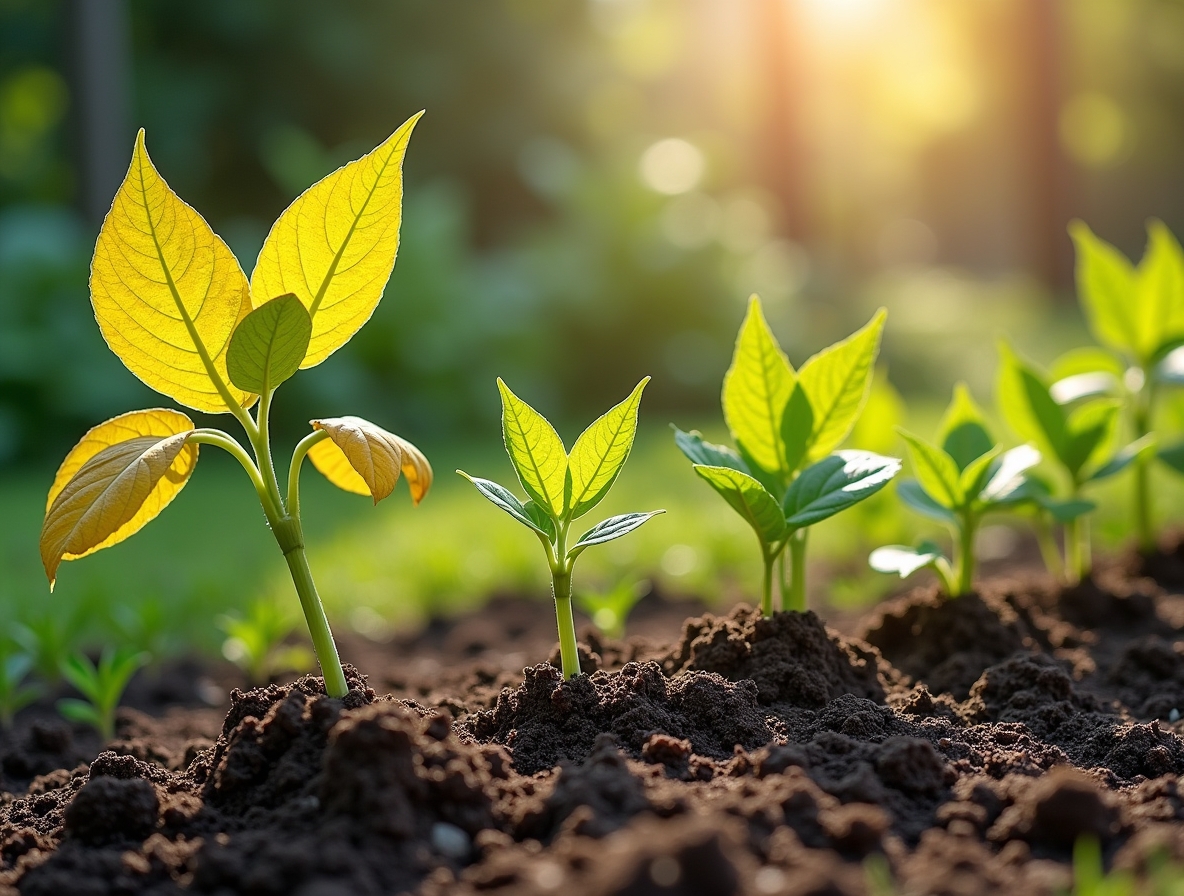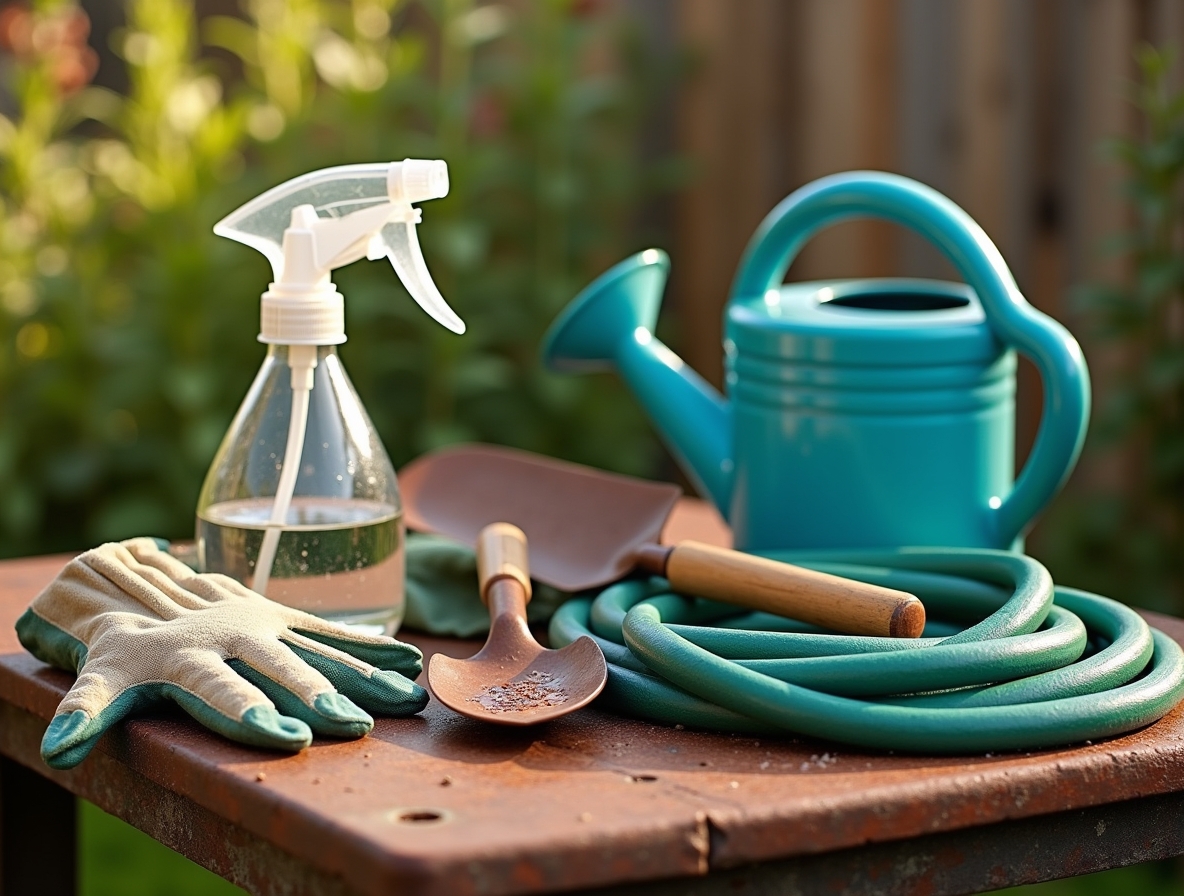Why Is It Important to Know These Mistakes?
Gardening is a rewarding activity that brings joy and fresh produce, but it isn’t always easy. Even experienced gardeners make mistakes from time to time. Recognizing these common errors before they happen can help save time, money, and effort. Many beginners lose motivation due to repeated failures caused by simple mistakes that could easily be avoided if they only knew how.
1. Watering Problems: Both Overwatering and Underwatering Are Harmful
Watering may seem simple, but it’s one of the most common mistakes in gardening. Overwatering can lead to waterlogging, which causes root rot—a condition where roots decay due to lack of oxygen. On the other hand, underwatering stresses plants, leading to wilting and leaf damage.
Proper Watering Techniques:
- Check the soil before watering. Insert your finger up to the first knuckle—if it’s dry, it’s time to water.
- Water in the morning to prevent rapid evaporation and fungal diseases.
- Direct water to the soil, not the leaves, to avoid sunburn and fungal growth.
- Use a watering can with a sprinkler head for small seedlings and a hose for larger areas.
2. Choosing the Wrong Plants for Your Location
One of the biggest mistakes beginners make is selecting plants based solely on appearance without considering their climate and soil conditions.
How to Choose the Right Plants:
- Determine your USDA hardiness zone or tropical zone for proper plant selection.
- For vegetable gardening, choose varieties suited to your climate.
- If space is limited, opt for dwarf varieties or container-friendly plants.
- Consider sunlight conditions—full sun, partial shade, or full shade.
3. Neglecting Soil Quality
Soil is the foundation of healthy plants. Many gardeners make the mistake of planting without first testing and preparing the soil.
Improving Soil Quality:
- Add 2-3 inches of organic compost annually.
- Use the chop-and-drop method for natural mulching.
- Test soil pH and adjust if necessary (6.0-7.0 pH for most plants).
- Rotate crops yearly to prevent soil nutrient depletion.
4. Incorrect Pruning Methods
Pruning is an essential skill every gardener should learn, but many are either afraid of it or do it wrong.
Proper Pruning Techniques:
- Use sharp and clean pruning shears for clean cuts.
- Remove dead, diseased, or crossing branches.
- Cut at a 45-degree angle, ¼ inch above a bud.
- Different plants have different pruning seasons—research each plant’s needs.
5. Misusing Fertilizer
Fertilizer is like vitamins for plants—too much or too little can both be harmful.
Fertilization Tips:
- Organic fertilizers (e.g., compost tea, worm castings) are preferable.
- Conduct a soil test before fertilizing to determine specific needs.
- Dilute synthetic fertilizers to avoid fertilizer burn.
- Apply fertilizer to moist soil and water afterward.
6. Mistakes in Seed Planting
Many plant seeds too deep or sow too many at once, resulting in poor germination.
Proper Seed Planting:
- Read seed packet instructions for correct planting depth.
- Follow the finger rule: plant seeds 2-3 times their diameter deep.
- Sow slightly more seeds than needed (for backup), then thin later.
- Keep the seedbed moist but not waterlogged.
7. Pest and Disease Control Errors
Using chemical pesticides as a first resort is a common mistake that can harm your garden’s ecosystem.
Natural Pest Control Methods:
- Plant companion plants that repel pests (e.g., basil near tomatoes).
- Use physical barriers like row covers.
- Attract beneficial insects by planting flowering plants.
- Inspect plants regularly to catch pest problems early.
8. Improper Mulching
Mulch is essential in gardening, but many apply it incorrectly.
Proper Mulching:
- Apply a 2-3 inch layer of organic mulch.
- Avoid placing mulch directly against plant stems (leave 1-2 inches of space).
- Choose the right mulch material (wood chips, straw, leaves) for your plants.
- Replace mulch periodically as it decomposes.
9. Failing to Recognize Plant Diseases
Late detection of plant diseases can lead to their spread throughout the garden.
Common Disease Prevention:
- Plant disease-resistant varieties.
- Avoid nighttime watering to prevent fungal growth.
- Provide proper spacing between plants for air circulation.
- Remove and dispose of infected plants immediately.
10. Choosing the Wrong Plant Location
Sunlight requirements vary per plant, and incorrect placement can stunt growth.
Sunlight Management:
- Observe your garden throughout the day to identify sunny and shady spots.
- Most vegetables need 6-8 hours of direct sunlight.
- Shade plants thrive with 3-4 hours of morning sun.
- Use shade cloth for plants sensitive to intense heat.
Continuous Learning in Gardening
Gardening is a lifelong learning journey where every mistake is an opportunity to grow. Even professional gardeners make mistakes occasionally. What matters is recognizing and correcting them as soon as possible.
Keeping a garden journal helps track mistakes and solutions. Connect with fellow gardeners in your area and consult experts when in doubt. Over time, these mistakes will simply become part of your experience as a gardener.
The key to successful gardening lies in proper knowledge, patience, and consistent observation of your plants. Start with small steps, don’t fear mistakes, and enjoy every moment of your gardening journey.

